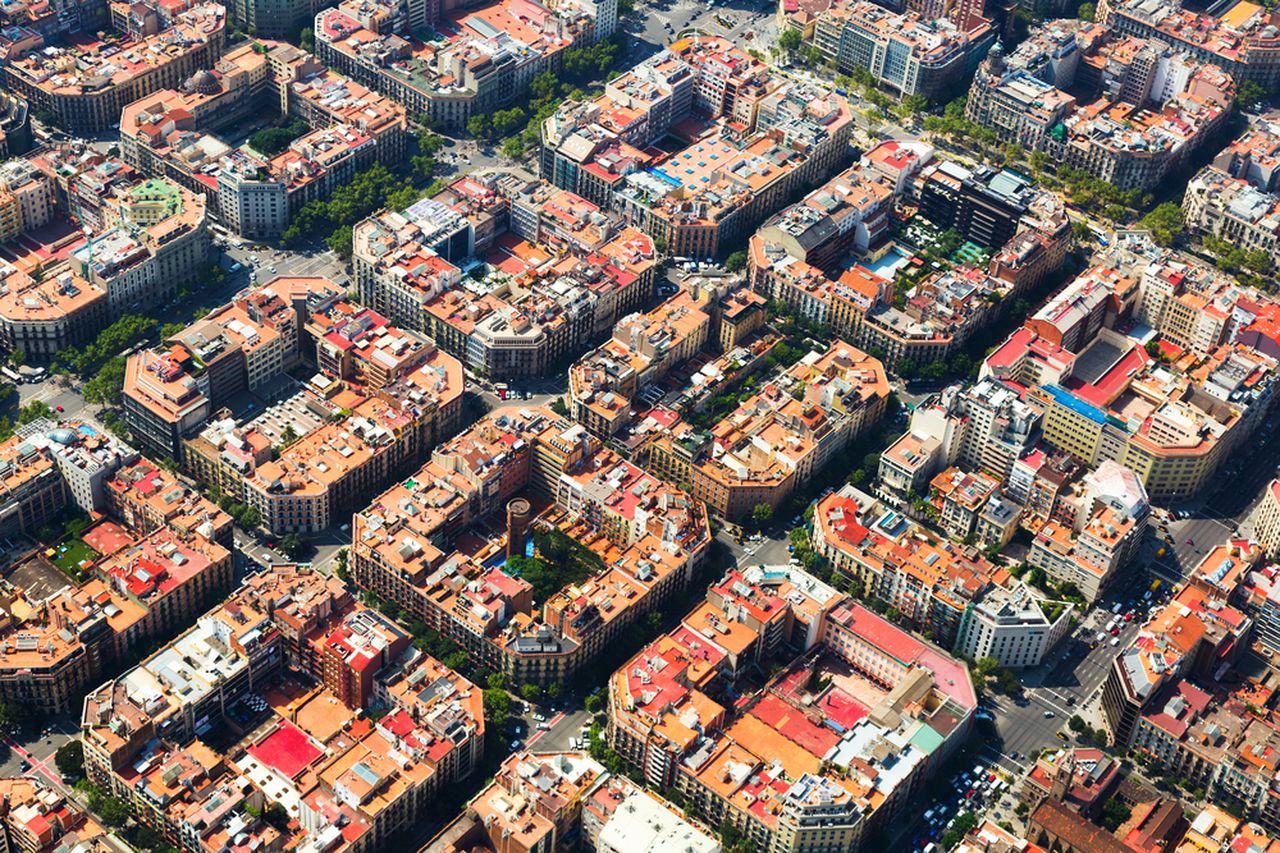Superblocks: how Barcelona is taking city streets back from cars

Modern cities are ruled by cars. Streets are designed for them; bikers, pedestrians, vendors, hangers-out, and all other forms of human life are pushed to the perimeter in narrow lanes or sidewalks. Truly shared spaces are confined to parks and the occasional plaza. This is such a fundamental reality of cities that we barely notice it any more.
Some folks, however, still cling to the old idea that cities are for people, that more common space should be devoted to living in the city rather than getting through it or around it.
But once you’ve got a city that’s mostly composed of street grids, devoted to moving cars around, how do you take it back? How can cities be reclaimed for people?
The city of Barcelona has come up with one incredibly clever solution to that problem.
It’s a bird ... it’s a plane ... it’s SUPERBLOCK
As anyone who has visited knows, Barcelona is absolutely dreamy — one of the most pleasant, walkable cities on Earth, filled with markets, sidewalk cafes, and bustling street life.
/cdn0.vox-cdn.com/uploads/chorus_asset/file/6886661/barcelona-plaza.jpg) (Shutterstock)
(Shutterstock)
But it too has become clogged by cars and choked by air pollution over the past few decades. So in 2014 it developed an Urban Mobility Plan, designed to give the city back to people (and reduce pollution).
In America, we can’t even agree on the idea that cities are for people. We still decry bike lanes as a "war on cars," even in our allegedly progressive West Coast cities. So from where I’m sitting, the Barcelona plan is pretty fantastic: 186 miles of new bike lanes, a revamped bus system with better access and more frequency, more green space, and on and on.
But the coolest idea in it is "superblocks" (superilles in Catalan), a concept developed by Salvador Rueda, director of the Urban Ecology Agency of Barcelona. (Cities of the Future has a great interview with Rueda and a history of the superblocks concept — highly recommended. The Guardian also has nice piece.)
The idea is pretty simple. Take nine square blocks of city. (It doesn’t have to be nine, but that’s the ideal.) Rather than all traffic being permitted on all the streets between and among those blocks, cordon off a perimeter and keep through traffic, freight, and city buses on that.
In the interior, allow only local vehicles, traveling at very low speeds, under 10 mph. And make all the interior streets one-way loops (see the arrows on the green streets below), so none of them serve through streets.
Like so:
/cdn0.vox-cdn.com/uploads/chorus_asset/file/6884617/superblock1.jpg) (BNC Ecologica, via Cities of the Future)
(BNC Ecologica, via Cities of the Future)
In this way, you create a nine-square-block mini village, the interior spaces of which can be more equitably shared between cars and other uses.
The plan will be implemented in two phases. From the Cities of the Future piece:
In the first phase of the plan, which is now being implemented in a few areas, the maximum speed on the roads within the Superblock is limited to 20 km/h (12.5 miles per hour). Phase one of the Superblocks can be implemented easily, at low cost, mainly through the changing traffic signals. Rueda estimates that Barcelona can implement phase one across the city for less than € 20 million ($22 million).Phase two is more ambitious. It will transform city life and the way people use public space. Curbside parking within the Superblocks will disappear (by building off-street garages), and the maximum speed will be 10 km/h (6 m/h), allowing people to use the streets for games, sport, and cultural activities, such as outdoor cinema.
/cdn0.vox-cdn.com/uploads/chorus_asset/file/6884877/Two-Phases-of-Superblocks.jpg) (BNC Ecologia, via Cities of the Future)
(BNC Ecologia, via Cities of the Future)
So you know all those pedestrian avenues and open plazas you love so much in old, built-pre-automobile cities? This would amount to giving every citizen direct access to something similar.
If superblocks were fully implemented across the city, Rueda estimates that 60 percent of road space now devoted solely to cars would be shifted to mixed use or car-free. Amazing.
The Barcelona government lists six aims for superblocks:
- More sustainable mobility
- Revitalization of public spaces
- Promotion of biodiversity and urban green
- Promotion of urban social fabric and social cohesion
- Promoting self-sufficiency in the use of resources
- Integration of governance processes
The idea is that these superblocks would become distinct communities, neighborhoods within neighborhoods, with shared governance and common resources — the urban equivalent of a microgrid, if you will.
Superblocks are being implemented in several neighborhoods in Barcelona now, and there’s potential for many more:
/cdn0.vox-cdn.com/uploads/chorus_asset/file/6884999/barcelona-superblocks.png) (Ajuntament de Barcelona)
(Ajuntament de Barcelona)
They’ve caught on in a few other Spanish cities as well, but Rueda emphasizes that the model can be used in any city, in any country, and that it’s far cheaper than building new infrastructure.
Superblocks are easier to implement when you start with a neat street grid, as in Barcelona’s Eixample district (where some of the first ones are located), but there’s no reason the basic idea couldn’t be adapted to other configurations.
Now imagine the city where you live, or your neighborhood. Imagine confining motorized vehicle traffic to a perimeter around several interior blocks, where space would be opened up to festivals, farmers markets, bikes, families strolling, kids playing in the streets, and you, there, in your favorite chair at the sidewalk cafe, watching it all go down as you sip an espresso.
Wouldn’t that be nice?
http://www.vox.com/2016/8/4/12342806/barcelona-superblocks
No comments:
Post a Comment